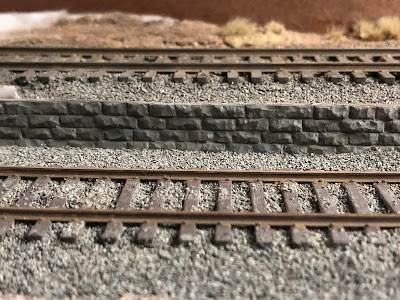Some examples:
The December 1945 issue is largely focused on discussing industry on the railroad, and attracting more, including an article for the newly formed Department of Industrial Development. A particularly useful article shows several new ads highlighting some of the companies on the New Haven Railroad:
Eastern Massachusetts
American Tread CompanyBaker's
Bendix
Bethlehem Steel
Bird
Curity
Dennison's
Douglas
Firestone
Fisk
Glenwood
Good Year
Hercules
Ivory Soap
Pepperell Fabrics
Plymouth
Reed & Barton
Revere
Rexall
Rinso
Ruberoid
Walk-Over
Wamsutta
Eastern CT
AralacArmstrong Tires
Arrow Shirts
Babock
Bigelow Weavers
Cheney
Colt
Ebco
Erector
Fuller
International Sterling
P&W
Packer's Tar Soap
Pond's
Royal
Russwin
Sargent
Silent Glow Oil Burners
Silex
Stanley
Thermos
Underwood
Uinversal
Williams
Winchester
Rhode Island
American Wringers
Ashaway
Anaconda
Beaded Tip Shoe Laces
CB Cottrell
Corning
Crown Zippers
Davol
Esmond Blankets
Fiberglas
General Cable
Good Year
Gorham Sterling
Grinnell & Co
Hope
J&P Coats Threads
Kennescot Wire & Cable Co
Lonsdale
Nicholson USA
Seidner
Taft-Pierce
Washburn Wire
Western MA
American OpticalAmerican Woolen Co
Arrow Shirts
Cluett
Columbia Bicycles
Eagle A Papers
GE
Gilbarco
HB Smith Cast Iron Boilers
Johnson Wire
McCallum
Peabody
Pro-phy-lac-tic Brushes
Pullman
Simonds Saws
Whittall's
Whitney Carraiges
Worthington
Wyman-Gordon
Western CT
AccoAnaconda
Benrus
Bigelow Boilers
Bridgeport Brand
Bryant
Bullard
CBS
Chase Brass & Copper
Corbin
Dictaphone
Dobbs
Knox
Lee
Malloby Hats
New Departure
Pitney Bowes
Reybestos
Sessions Clocks
Seth Thomas Clocks
Sikorski
Singer Sewing Machines
Stanley
Yale
There are a lot of industries I don't recognize. The ads were for a full-color booklet, Southern New England for Tomorrow's Industry." I'll have to see if I can find a copy, although it looks like there is one at UCONN in the Dave Peter's collection.
In addition to that, there are also occasional articles on a specific online industry. One of particular interest to me is in the July 1947 issue: and we do mean "Universal" - the oldest and the newest which is about the Landers, Frary and Clark industry in New Britain. It's a brief overview of the company and it's products, with one particularly useful bit of information: "To expedite shipments, Herbert Wyatt, Traffic Manager, ships complete carloads from the New Britain plant whenever possible. These cargoes are then broken down into spammer shipments at eight district warehouses throughout the country. Time to see if I can find out where these were located...
The June-July 1946 issue has an article on the Pond's plant in Clinton, CT. This is even better, indicating, "Only the finest and purest ingredients go into the products at Clinton, but they arrive in carload lots - tank cars of white oil from Pennsylvania, carloads of talcum powder, beeswax, stearic acid, glass jars from Washington Pa., bottles from Zanesville, Ohio, chalk from the "white cliffs of Dover." The finished products are shipped out in carload lots to warehouses in various parts of the country..."
There's also a photo with a caption that states, "The New England Transportation Company handles all Pond's l.c.l. business."
This type of information isn't always easy to come by, and while there are only a handful covered here, it's a start.





















































